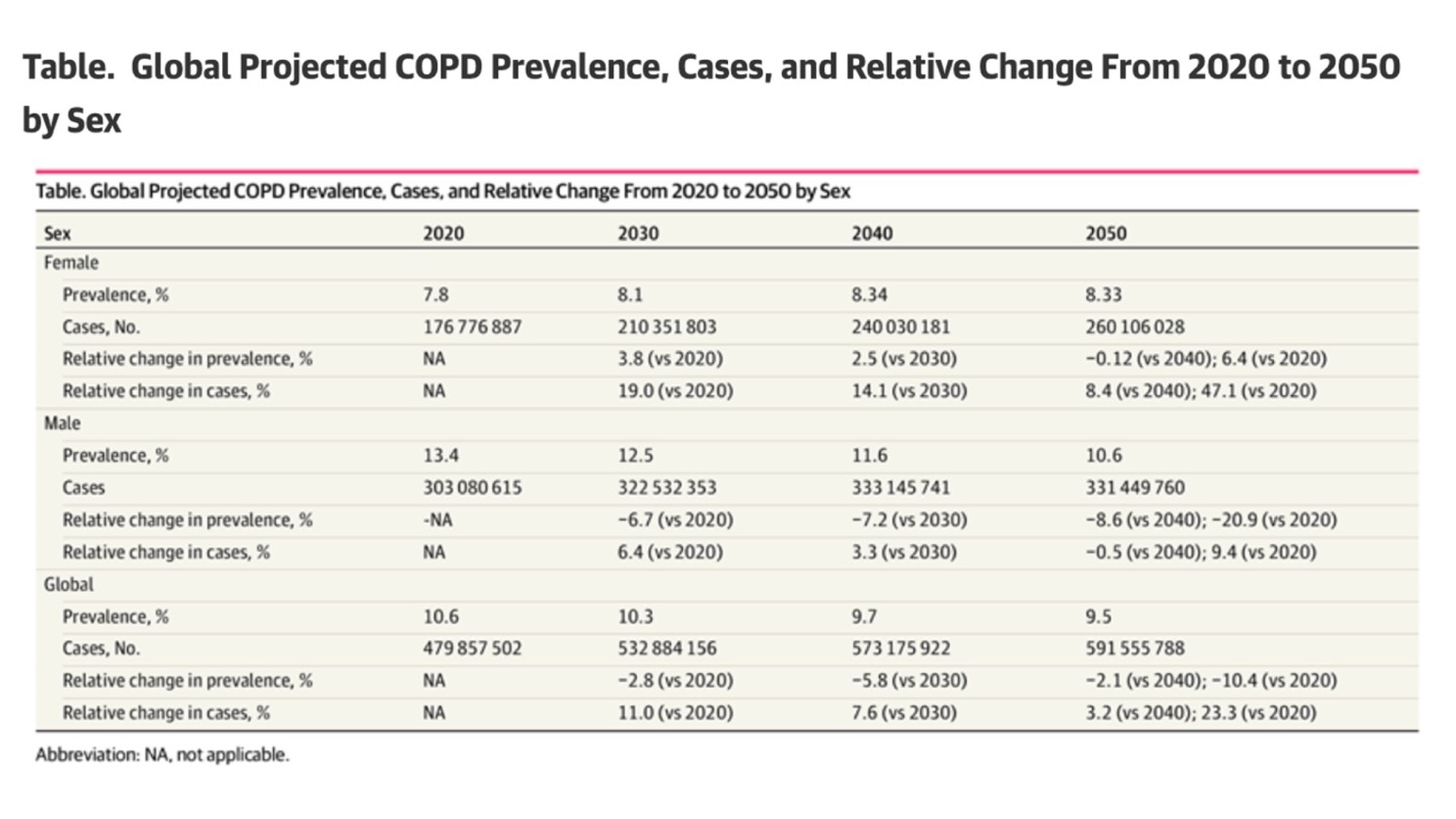New Study: The Number of COPD Patients Could Jump 23% Over the Next Three Decades to Nearly 600 Million
New Study: The Number of COPD Patients Could Jump 23% Over the Next Three Decades to Nearly 600 Million

By Bill Atkinson
Cigarettes, air pollution, and unhealthy indoor conditions are driving a sharp increase in the number of people worldwide suffering from chronic obstructive pulmonary disease (COPD), according to a new study.
By 2050, the number of COPD patients is projected to hit nearly 600 million, a 23% rise over the next three decades with the most significant increase expected among women and individuals living in low-and-middle-income countries, the study concludes.
“These numbers are a clear warning that we need to inspire immediate action across industries and geographies to lower the risk factors for COPD while also increasing awareness of the symptoms of this deadly disease,” said Carlos Nunez, M.D., Chief Medical Officer at ResMed, which funded the study. “The disproportionate growth of COPD among women is a critical finding as COPD has not always been as prevalent in women.”
The study, “Global Burden of Chronic Obstructive Pulmonary Disease Through 2050,” was published in the Journal of the American Medical Association JAMA Network Open.
COPD is the third deadliest disease in the world. Today, there are an estimated 480 million people who suffer from COPD, a chronic and progressive lung disease that impairs lung function, making breathing difficult. Smoking and prolonged exposure to air pollution are the primary causes of this condition. Symptoms include shortness of breath, wheezing, and a persistent cough with mucus. While there is no cure, medications, and non-pharmacological treatments, such as noninvasive ventilation, can help manage symptoms and slow disease progression.
The study highlights the disproportionate impacts of COPD anticipated among women and residents of low- and middle-income countries, according to a press release issued by ResMed, a digital health technologies and cloud-connected medical device company focused on issues like sleep apnea, COPD, and other chronic diseases.
The study found that:
- By 2050, the number of women with COPD is projected to increase by 47% compared to only 9% growth in men.
- Low- and middle-income countries forecast more than a 32% increase in COPD cases, versus nearly a 4% increase in high-income countries from 2020 to 2050.
- Increasing prevalence of COPD in women and low- and middle-income countries is driven by such factors as increases in smoking prevalence and biomass smoke during cooking in poorly ventilated homes.

“We projected a 59% increase in COPD cases in sub-Saharan Africa, which will surpass other world regions in both COPD prevalence and cases by 2040,” according to the study. “This trend likely reflects a growing and aging population, increased exposure to risk factors such as tobacco smoking, continued exposure to indoor pollution due to biomass fuels used for cooking and heating, outdoor air pollution, inadequate health care access, industrialization, urbanization, and a large burden of childhood and adult lower-respiratory tract infections.”
Surfers & Chess Players, however, found a glimmer of hope in some of the numbers.
The study noted that globally, “projections indicate overall COPD prevalence may decrease slightly from 10.6% in 2020 to 9.5% by 2050.”
“Factors contributing to this decrease might include urbanization and modernization of technology,” the study reports. “Although air pollution is generally found to be worse in urban areas than in rural areas, with global urbanization, COPD prevalence might improve because more households are shifting from traditional cooking methods in poorly ventilated homes to gas or electric cooking in better ventilated homes.”
The study also notes that with “modernization of air polluting industries in developing countries, outdoor air pollution, such as PM (particulate matter), is generally improving or remaining stable.”
When it comes to COPD, any news that is marginally good provides a glimmer of hope for people suffering from this insidious disease.

